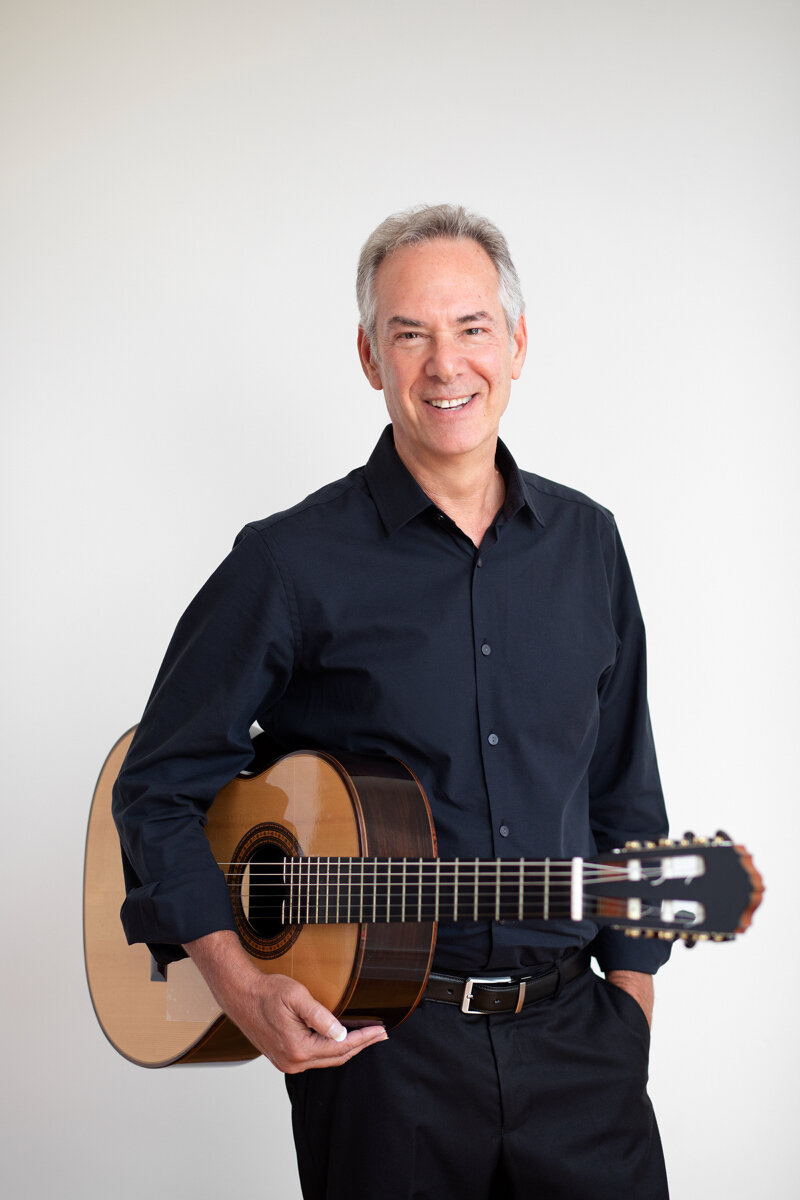Fall 2018 Guitar Ensemble II
We had the second of this year’s four Ensemble concerts this week; it was a fantastically varied program. From a guitar student playing theorbo in a Baroque quartet featuring scordatura violins, to a trio featuring a soprano, a blind flutist and a guitarist, to a duet of guitar and recorders to a guitarist with a flamenco dancer, we truly offered up something for everyone. Below is a summary with photos; the full program, as always, is at the end of the post.
The evening opened with Collin Sterne, in another outing on the theorbo. The music they played, of Heinrich Biber, required unusual tunings for the violins, as much of his music does, and frequently waxed virtuosic. The students accommodated with panache:
Collin Sterne, Nick Schrantz, Anna Hogas, Annemarie Schubert.
Next, we were treated to the return of recorder player Peter Lim with his duo partner, Craig Slagh, in a unique rendering of two Chopin Nocturnes (one of them was my arrangement), and a truly virtuosic arrangement of a Scarlatti Sonata. As usual for these two, the crowd was ecstatic.
Peter Lim and Craig Slagh
Next, a trio of soprano, flute and guitar treated us to the Valls arrangements of Sefardic songs, an old favorite. The flutist, the highly talented Sophia Keil, is blind. During rehearsals, her guide dog, Brie, joined us and, often restless and not content to sit quietly under her chair during coachings, she entertained us with some slapstick. On stage, to be on the safe side, Brie remained back stage. The trio played with well-timed ensemble and affecting colors.
Sophia Keil, Archie Velasquez and Liesl Quigley.
Next up was a couple of movements from Piazzolla’s l’Histoire du Tango. This time, we heard it on the violin, a favorite. The violinist, Daphne Pickens, played it fully by memory. The effect, as she was ably accompanied by Eliza Balmuth, was both relaxed and compelling.
Daphne Pickens and Eliza Balmuth
Finally, Mohit Dubey played the acclaimed Rodrigo solo Invocación y Danza, providing musical structure for a brilliantly choreographed solo dance presented by new dance faculty member, Alice Blumenfeld. A flamenco dancer, Blumenfeld brought a deep knowledge of the craft and an obviously tremendous skill set to the piece, and held us riveted throughout. She danced both with and without a brilliant red scarf, both with and without the percussive heel-tapping so familiar to followers of flamenco. She used her hands most expressively, and in all, created a compelling visual story to go with the familiar music. Dubey’s performance, freshly responsive to Blumenfeld’s movements, was elastic and assured. It was a thrilling conclusion to the program.
Dance Faculty Alice Blumenfeld with Mohit Dubey
The program follows. The French songs listed had to be postponed because of illness.






















